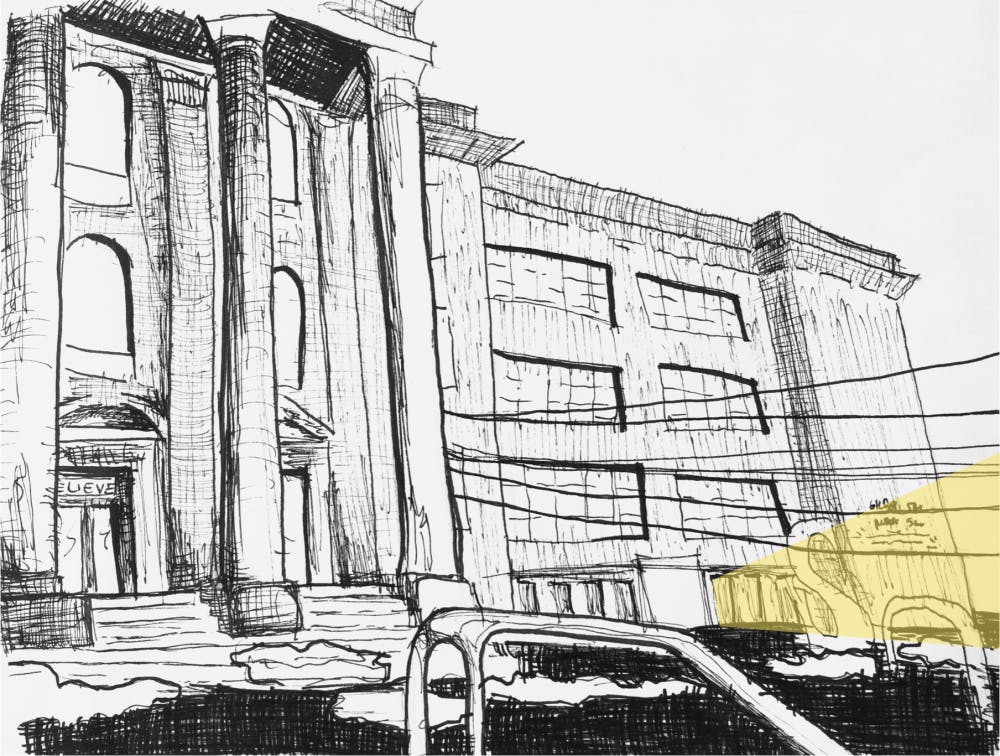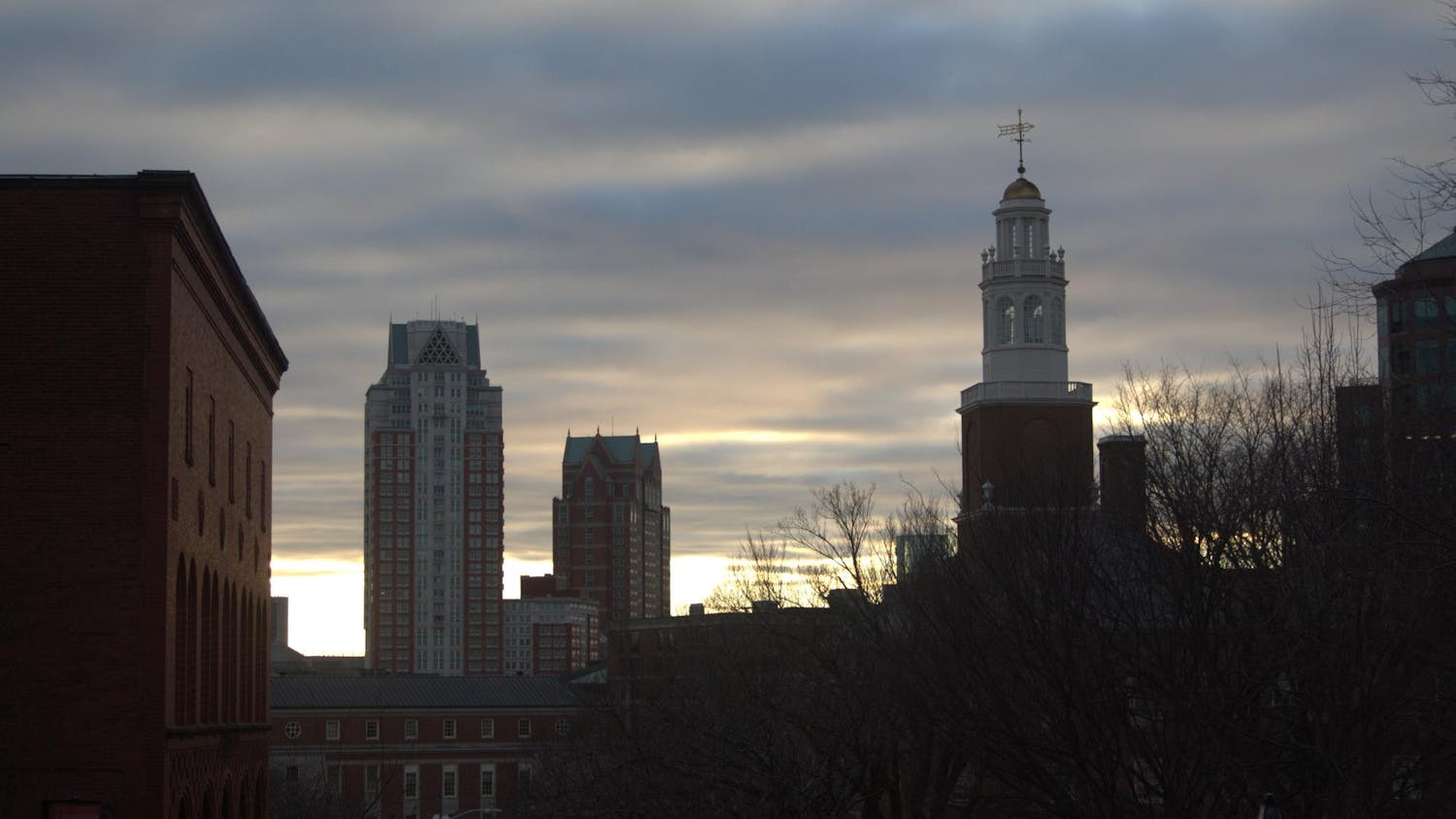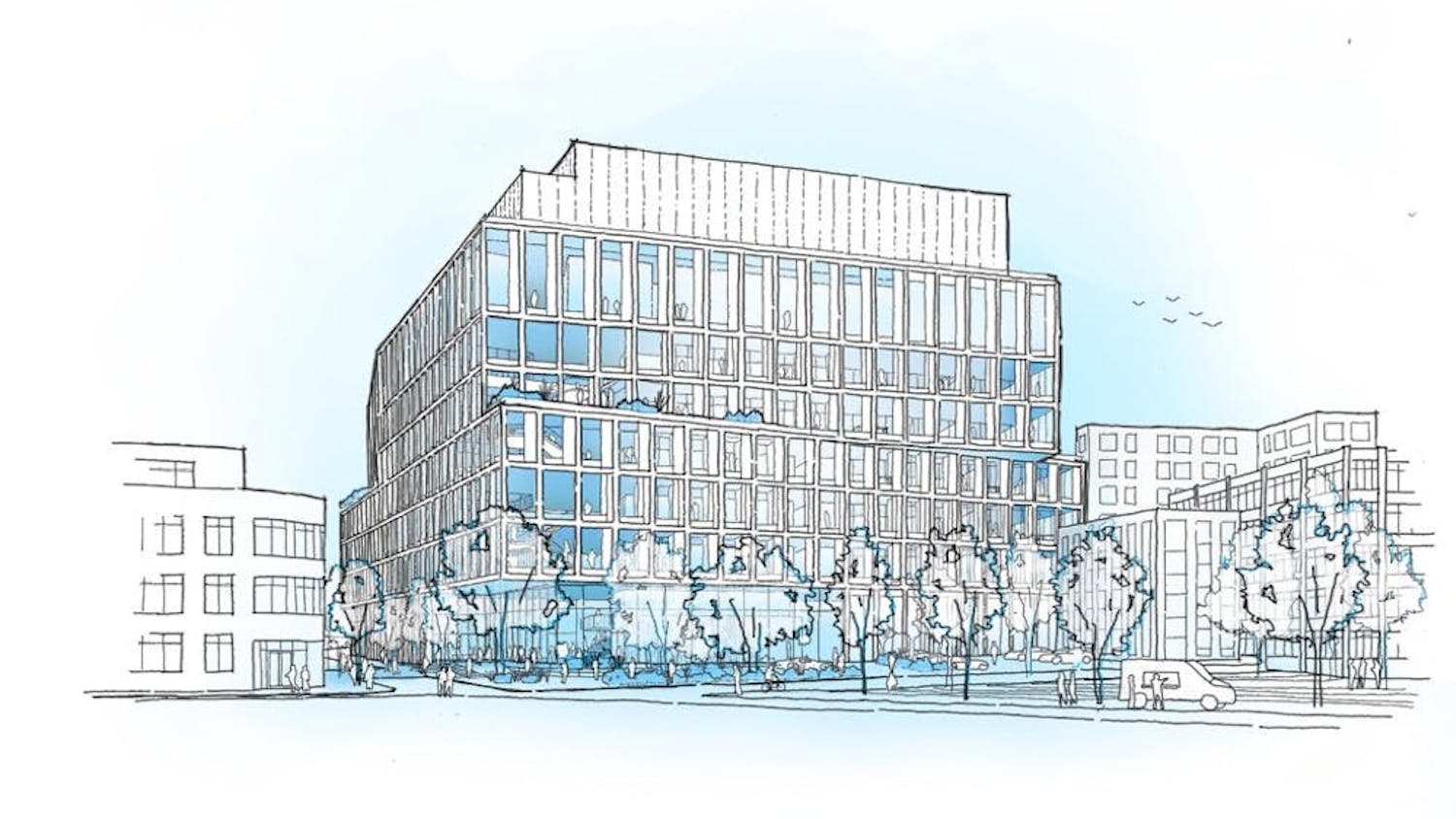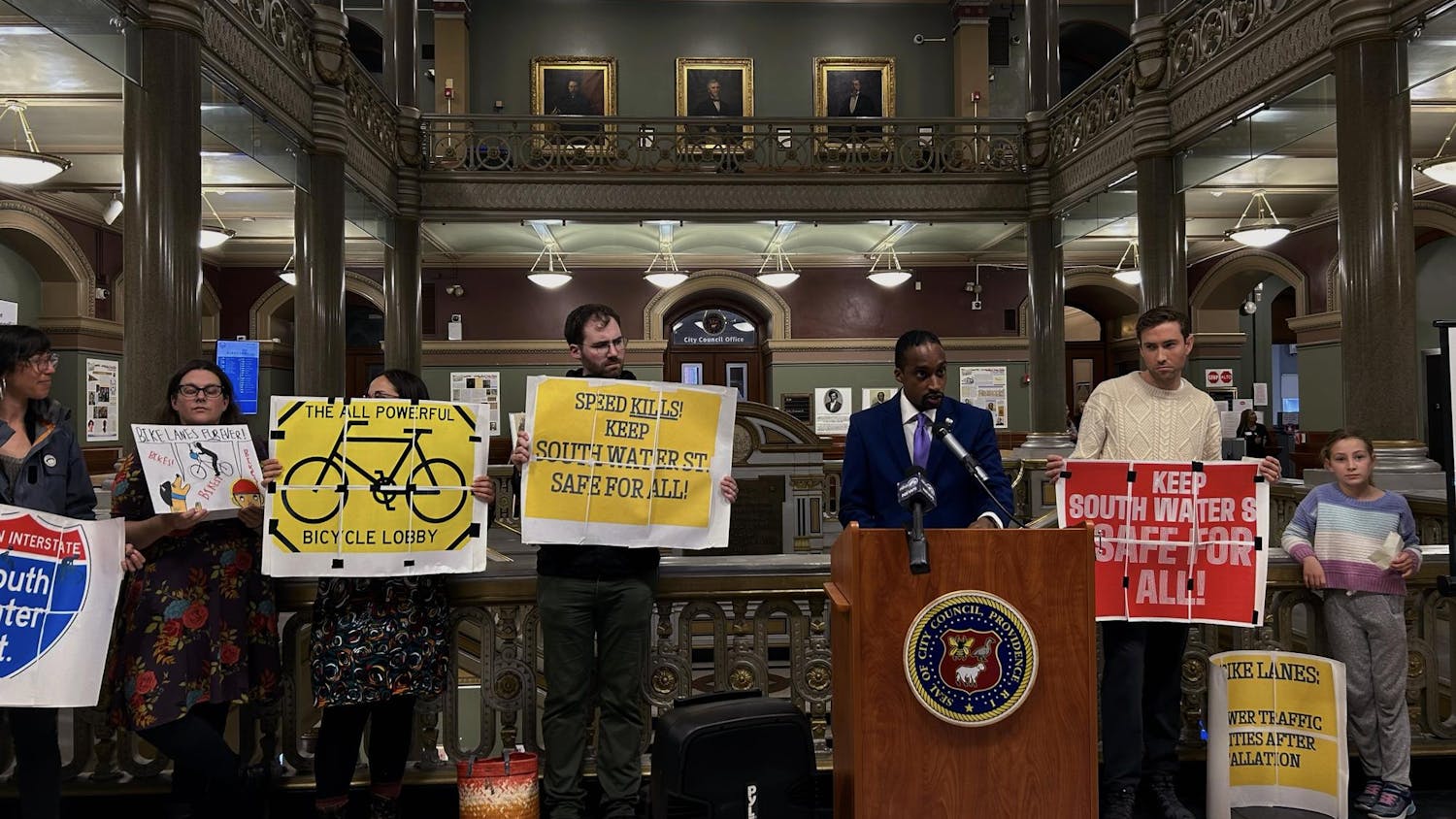In the wake of a state takeover of the Providence Public School District, Gilbert Stuart Middle School teachers and administrators are implementing new strategies aimed at meeting every child’s needs.
Within Gilbert Stuart, teacher Elisabeth Snead uses classroom methods popular among her students and inspired by values that were instilled through her own Providence Public School education. Miss Snead, who teaches her sixth grade history class how to write five-paragraph essays, is working in an economically disadvantaged school, one of 11 Providence schools identified for Comprehensive Support and Improvement under the federal Every Student Succeeds Act for the 2019-20 academic year.
Despite performing poorly in a now highly publicized report from Johns Hopkins University, Providence Public Schools have at least one thing right: great teachers working to build a strong school culture. Miss Snead is one of these teachers.
Students on Miss Snead: “We’re learning but we’re actually having fun at the same time”
This is the first time that sixth grader Rachael Rodriguez is taking a history class. It is also her first year at Gilbert Stuart. For Rachael and classmate Cataline Robledo, starting middle school meant stepping into a large, new building and a new social environment, as well as taking new classes.
Amid a year of big changes, both girls said that Snead’s class makes them feel calm and engaged with the material they’re studying.
Whenever she considers it necessary, such as when a conflict arises, Snead establishes a “circle time” — a moment during which students pass around a stick or a ball, taking turns reflecting on the good things that are happening in the classroom and the things they want to change.
During class, if students need it, they can step aside and sit at a little desk where “we can just draw, and let our negative energy go away,” said Rachael.
It’s a classroom where students say they want to be. Earlier this year, when teaching pre-historic civilizations, Snead asked her students to build a shelter out of toothpicks, tape, glue and popsicle sticks, imitating pre-historical structures that would allow people to survive the outdoors. When Snead uses these interactive methods, “we’re learning but we’re actually having fun at the same time,” said Cataline, who goes by Cat.
According to Rhode Island Department of Education, the PPSD had a 75 percent high school graduation rate in 2017. Just under half (49 percent) of those who graduated from PPSD high schools that year enrolled in two-year or four-year colleges within six months of graduation, according to the 2019 Rhode Island Kids Count Factbook.
One Friday, Snead talked about the kinds of jobs students could get with a university degree in history. Snead told her students that a history degree from college opened the doors to a wide variety of “different choices,” said Cat. For example, “you could be a history professor in university or college,” said Rachael — who was wearing a t-shirt that read “Girls Can Do Anything.”
What Snead learned as a student in PPSD: “You have to be able to write an essay”
When teaching students how to write a five-paragraph essay according to the RACE strategy (Restate the question, Answer the question, Cite text evidence, Explain what it means), Snead often encounters students who will do the “R,” but forget the “C” or the “E.” They don’t understand why she’s asking them to do more, Snead said.
Students will ask, “‘Why do we have to talk like this? I don’t have to talk to my friends like that.’ And then I try to tell them, this is how professionals write,” she explained. “This is how you’re gonna have to write in college, or if you’re going to be successful. You have to be able to write an essay.”
Snead, a PPSD alum, holds that the best teacher she had growing up was the one who taught her to write essays.
It was 1997, and she was a seventh grader at Nathanael Greene Middle School, two and a half miles away from Gilbert Stuart.
Snead gives her students some of the same advice she received from her old teacher: when wrapping up with the conclusion“make sure you accomplish everything that you said you were gonna do, cause you’re not a liar.”
Going out of their way: Gilbert Stuart’s staff on creating a strong school culture
This year has not only brought big changes for Cat and Rachael — it has also been a year of big changes for Gilbert Stuart’s staff. As the district was taken over by the state, Gilbert Stuart was also assigned a new principal, Nkolika Onye.
In 2011, Onye was appointed as the principal of Mount Pleasant High School after it was identified as one of Rhode Island’s lowest achieving schools. She was tasked with spearheading the plan to turn Mount Pleasant into a “world-class institution,” according to The Boston Globe.
One of the aspects Onye identifies as central to student achievement is a welcoming school culture where students feel important. “My philosophy is culture is everything,” she said.
District-wide, the Johns Hopkins report identified the school culture, one in which students are bullied and feel unsafe in classrooms, as one of the most important district issues, alongside poor academic performance.
Before the start of this school year, Gilbert Stuart’s teachers were offered training in creating restorative circles in their classroom. Restorative circles — like Snead’s activity — allow students to express how they’re feeling, with the goal of creating a welcoming classroom environment.
The training took a full day, and it was unpaid. According to Onye, some 55 out of the 75 teachers who work at the school showed up.
For Onye, this was a positive omen, because teachers’ widespread commitment to all students is integral to creating a strong school culture. “The belief in all kids is what is going to continue to turn this school around,” Onye said. “And the faculty that’s really trying to fly together. … You can’t do any of this culture change without a strong staff that gets it.”
To apply these new approaches, teachers decided to step outside the classroom. Last year, multiple teachers were struggling with a particularly hyperactive group of boys who all played on the neighborhood football team, the West Elmwood Intruders. One Sunday, some teachers showed up unannounced to the boys’ game.
“We ended up staying all day,” explained Jaycee Maldonado, saying that they met the students’ families at the game. The next day, in class, there was a “shift.” The football players sat down without arguing. “They were just so proud that I took two seconds of my life to show up outside of school,” Maldonado said.
Making students feel at home in the classroom is important, because for some students, school is all they have. One teacher mentioned that when students got a day off last year, one of his pupils wasn’t excited about it. When he asked the student why, she replied: “I don’t have nothing to do at home.”
Creating school culture in the West End
But making sure that students show up to class remains an ongoing challenge. According to RIDE, 33.1 percent of Gilbert Stuart’s students are chronically absent, meaning they missed at least ten percent of the 180 school days in a year.
In order to get students to go to school and stay in school, they have to want to be there, said Snead, “and part of that is making them happier every day.” An ideal school culture looks like “what it does on Nickelodeon or Disney Channel,” she added. Gilbert Stuart’s students “grow up in a neighborhood where they watch shootings, and they watch cars getting stolen, and they have parents that leave them by themselves, and people laugh when we say we want this to look like High School Musical,” she said. “It’s funny, but it’s not.”
Other teachers echoed this thought. “Just because we teach in a low-income area doesn’t mean that our expectations for our kids are lower,” one teacher said.
According to RIDE, 92 percent of Gilbert Stuart’s students are economically disadvantaged. That’s higher than the district average of 87 percent.
Some of the issues that concern Gilbert Stuart’s student body are reflected in the content of the school newspaper, the Gilbert Stuart Times. Established in 2018, the paper publishes student writing. The publication has detailed news including an article about a teenager who was shot outside his Providence high school, a report on “weirdly” warm autumn weather and a feature about video game nights. The newspaper also publishes students’ personal stories in the shape of memoirs and narrative features.
A piece written by Kimberly B., a seventh grader, tells the story of her grandmother’s death; it is written partially in English and partially in Spanish. A memoir by eighth grader Jennifer G.P. narrates the story of a family’s migration to the United States in the first person.
At the end of the day, most students want to feel connected to their school, “because this place is their home for three years,” said Snead. Striving to create a school culture that makes them feel welcome “gets exhausting, but we have the time. We can make it for them, because it’s worth it in the end.”





